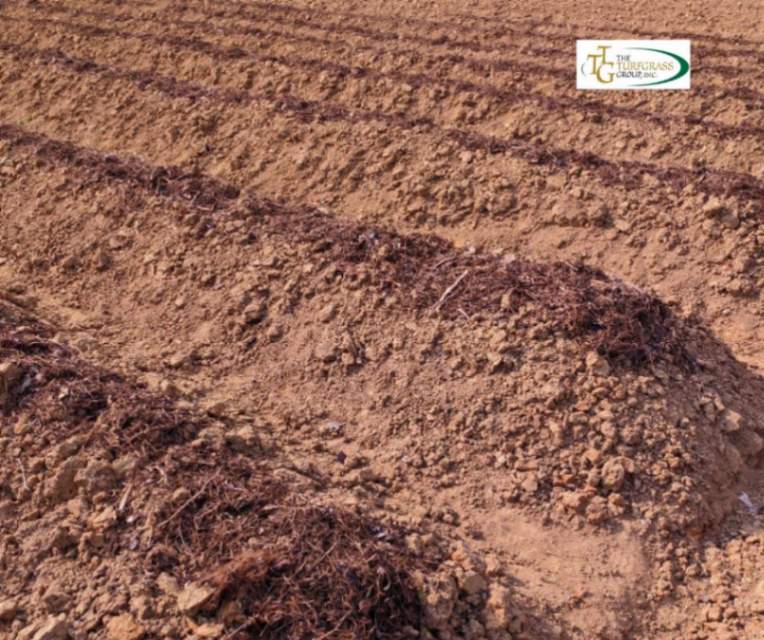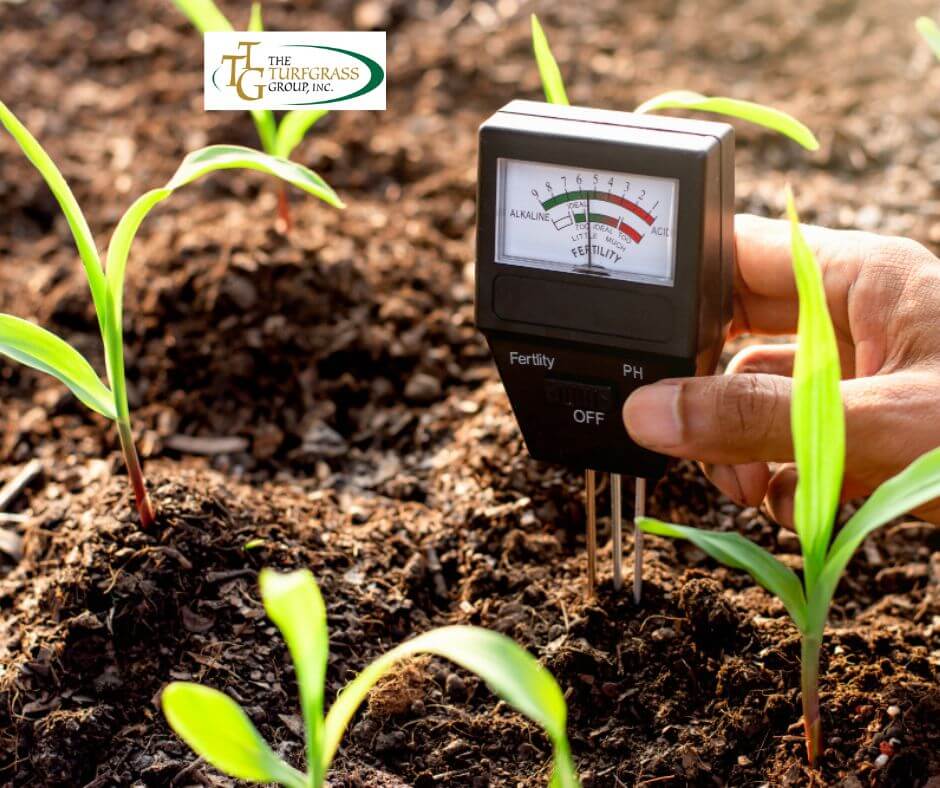
Soil compaction is a common issue in agriculture and gardening that can significantly hinder plant growth and reduce soil health.
It occurs when soil particles are pressed together, reducing pore spaces and restricting the movement of air, water, and nutrients.
Compacted soil can lead to poor drainage, decreased root growth, and increased erosion.
However, with proper care and management, soil compaction can be prevented.
Here are ten tips to help you prevent soil compaction and maintain healthy soil for optimal plant growth:
Limit heavy machinery use:
Limiting the use of heavy machinery is crucial in preventing soil compaction, as these large vehicles can exert significant pressure on the soil surface.
The weight of tractors, harvesters, and other heavy equipment can compress soil particles, reducing pore spaces and restricting the movement of air, water, and nutrients.
This compression not only affects the topsoil but can also penetrate deeper layers, impacting soil structure and root growth.
To mitigate the risk of compaction, it’s essential to be mindful of when and where heavy machinery is used.
Avoid operating machinery on wet or moist soil conditions, as the increased moisture content makes the soil more susceptible to compaction.
Damp soil is more prone to sticking to tires or tracks, further exacerbating compaction issues.
Use controlled traffic patterns:
Implementing controlled traffic patterns is an effective strategy for reducing soil compaction and preserving soil health in agricultural fields and garden beds.
By establishing designated pathways for machinery and foot traffic, you can minimize the area subjected to compaction while maintaining access to different areas of your land.
To create controlled traffic patterns, carefully plan and mark out pathways that align with the layout of your fields or garden beds.
These pathways should be wide enough to accommodate the machinery and equipment used on your property, such as tractors, tillers, or harvesters.
Additionally, consider the natural contours of the land and aim to minimize sharp turns or steep inclines, which can increase soil disturbance.
Practice minimum tillage:
Embracing minimum tillage practices is an effective strategy for maintaining soil health and reducing compaction in agricultural and gardening contexts.
Rather than resorting to conventional plowing methods, which can disrupt soil structure and increase the risk of compaction, consider adopting conservation tillage techniques such as no-till or reduced tillage.
No-till farming involves planting crops directly into untilled soil without disturbing the existing soil structure.
This approach helps preserve soil aggregates and organic matter, reducing the likelihood of compaction and erosion while promoting soil health and biodiversity.
By leaving crop residues on the soil surface, no-till farming also protects against erosion and helps improve soil moisture retention.
Mulch regularly:
Regularly applying organic mulch to the soil surface is an effective strategy for preventing soil compaction and maintaining soil health in gardens and agricultural fields.
Organic mulches, such as straw, wood chips, or compost, serve as a protective barrier that shields the soil from the impact of raindrops and foot traffic.
When raindrops fall directly onto bare soil, they can dislodge soil particles and cause surface compaction.
Additionally, foot traffic, whether from humans or animals, can further compact the soil, especially in high-traffic areas.
By applying a layer of organic mulch, you create a cushioning effect that absorbs raindrops’ energy and minimizes soil disturbance from foot traffic.
Rotate crops:
Crop rotation is a valuable practice in agriculture that offers numerous benefits beyond just pest and disease management.
It also plays a significant role in preventing soil compaction and maintaining soil health.
By rotating crops, farmers and gardeners can leverage the diverse root structures and depths of different plants to alleviate soil compaction and improve soil aeration.
Different crops have varying root systems, with some plants developing deep taproots while others have shallow, fibrous roots.
When crops with deep root systems are grown in succession, they can penetrate deeper into the soil, breaking up compacted layers and creating channels for air and water infiltration.
This helps to alleviate soil compaction and improve soil structure, allowing for better root growth and nutrient uptake.
Avoid overgrazing:
Managing livestock grazing is essential for preventing soil compaction and maintaining the health of pasturelands.
Overgrazing occurs when livestock consume vegetation faster than it can regrow, leading to soil compaction, erosion, and degradation of pasture quality.
To mitigate these issues, it’s crucial to employ rotational grazing techniques and avoid overgrazing.
Rotational grazing involves dividing pastureland into smaller paddocks and rotating livestock between them at regular intervals.
By rotating grazing areas, the pressure on any one location is reduced, allowing vegetation time to recover and soil to aerate between grazing periods.
This prevents soil compaction and promotes healthier grass growth, leading to more productive pastures over time.
Monitor soil moisture:

Regular monitoring of soil moisture is essential for preventing soil compaction and maintaining soil health in agricultural and gardening practices.
Soil compaction is more likely to occur when the soil is wet or saturated with water, as the increased moisture content makes the soil more prone to compression.
To effectively monitor soil moisture levels, utilize various methods such as visual inspection, soil moisture sensors, or manual testing with a soil probe or auger.
Check soil moisture regularly, especially before engaging in any activities that may compact the soil, such as tillage, planting, or heavy equipment operation.
Incorporate cover crops:
Regular monitoring of soil moisture is essential for preventing soil compaction and maintaining soil health in agricultural and gardening practices.
Soil compaction is more likely to occur when the soil is wet or saturated with water, as the increased moisture content makes the soil more prone to compression.
To effectively monitor soil moisture levels, utilize various methods such as visual inspection, soil moisture sensors, or manual testing with a soil probe or auger.
Check soil moisture regularly, especially before engaging in any activities that may compact the soil, such as tillage, planting, or heavy equipment operation.
Implement proper drainage:
Installing proper drainage systems is crucial for preventing soil compaction and maintaining soil health in agricultural fields, gardens, and landscapes.
Poor drainage can lead to water accumulation and saturation of the soil, which exacerbates compaction issues by reducing soil aeration and creating anaerobic conditions.
To address poor drainage, consider implementing drainage systems such as tile drains or French drains.
Tile drains consist of a network of perforated pipes buried underground, collecting excess water and channeling it away from the soil surface.
These drains are effective for removing excess water from fields or low-lying areas prone to waterlogging.
Educate and raise awareness:
Raising awareness about soil health and the negative impacts of soil compaction is essential for promoting sustainable land management practices and preserving the health of our ecosystems.
By educating ourselves and others about these issues, we can inspire positive changes in our communities and encourage the adoption of practices that support soil conservation and vitality.
Start by learning more about soil health and the factors that contribute to soil compaction.
Understand how soil compaction occurs, its effects on plant growth and ecosystem function, and the long-term consequences for agricultural productivity and environmental sustainability.
Numerous resources, including research articles, books, online courses, and workshops, are available that can provide valuable insights into soil science and management practices.
Conclusion
In conclusion, by educating ourselves and our communities about the importance of soil health and the detrimental effects of soil compaction, we can foster a collective commitment to sustainable land management practices.
Through workshops, seminars, and advocacy efforts, we can raise awareness and inspire action to prevent soil compaction and promote soil conservation.
If you’re ready to implement sustainable soil management practices or if you have any questions about soil health and compaction, we encourage you to contact us.
Contact us at The Turfgrass Group to learn more about how we can support your efforts to preserve healthy soils and build resilient ecosystems.
FAQs
What is soil compaction, and why is it a concern for agriculture and gardening?
Soil compaction occurs when soil particles are pressed together, reducing pore spaces and restricting the movement of air, water, and nutrients. It can hinder plant growth, decrease soil health, and lead to issues like poor drainage, reduced root growth, and increased erosion.
How can heavy machinery contribute to soil compaction?
Heavy machinery, such as tractors and harvesters, can exert significant pressure on the soil surface, compressing soil particles and reducing pore spaces. This compression impacts soil structure and root growth, leading to compaction issues, mainly when operated on wet or moist soil conditions.
What are controlled traffic patterns, and how do they help prevent soil compaction?
Controlled traffic patterns involve establishing designated pathways for machinery and foot traffic and minimizing compaction by concentrating traffic in specific areas while leaving the majority of the soil undisturbed. This strategy helps distribute the load more evenly across the land, reducing the overall impact on soil structure.
What is minimum tillage, and how does it contribute to soil health?
Minimum tillage practices, such as no-till or reduced tillage, involve less disturbance of the soil during planting and cultivation. By preserving soil structure and organic matter, minimum tillage helps prevent compaction and promotes better soil health, including improved water infiltration and retention.
How does mulching help prevent soil compaction?
Mulching with organic materials like straw, wood chips, or compost creates a protective barrier on the soil surface, shielding it from the impact of raindrops and foot traffic. Mulch absorbs the energy of raindrops and minimizes soil disturbance, reducing the risk of compaction while improving soil moisture retention.
Why is crop rotation beneficial for preventing soil compaction?
Crop rotation involves planting different crops with varying root structures and depths, which helps break up compacted soil layers and improve soil aeration. Deep-rooted crops can penetrate deeper into the soil, alleviating compaction and enhancing soil structure for better root growth and nutrient uptake.